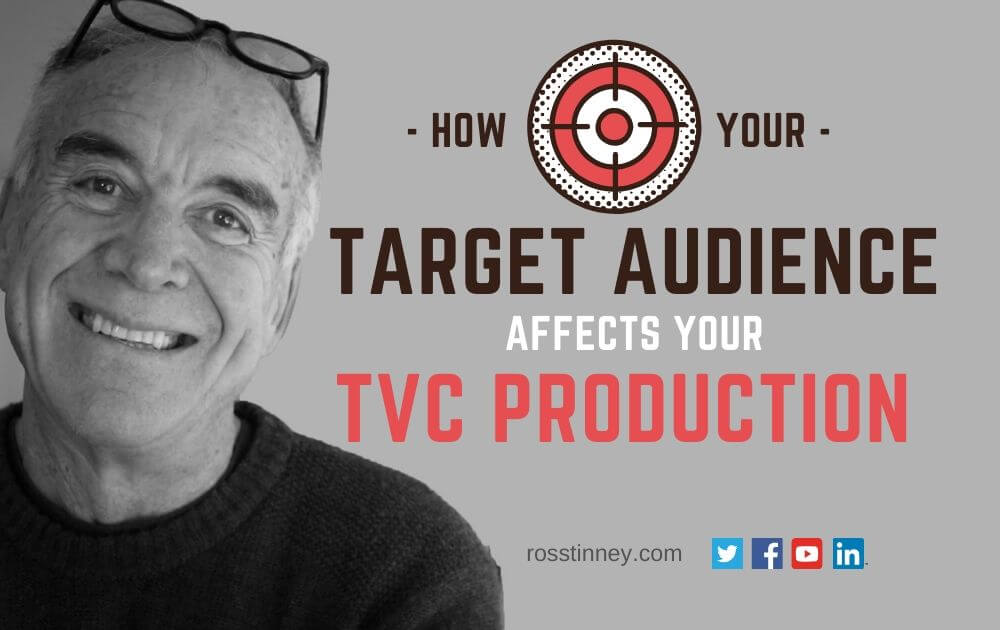(702 words – 3 min read) The art of communication for TVC production is about knowing your target audience. That is, the massive unknown out there who pays good money to be entertained in a cinema, snuggles up in front of the tv, or on their smartphone on the back of a boat in a bay…
As a TVC Director, it is vital that you have a clear understanding of who will be watching your corporate video or TVC at the back end. In other words, who is your target market? Is it young or old? Smart or not so smart? Middle earth? Rich, poor? Is it everyone? This will affect, among many other things, who the actors are, their wardrobe, music, edit style, etc.
6 ways the target audience affects the TVC production
For example, when shooting commercials where there’s a family home setting, I am advised by the client or advertising agency at the very outset which socio-economic sector the commercial is aimed at, be it B+, A-, C+. These grades affect the degree of simplicity or quirkiness that the commercial’s direction takes. My producer, production manager, or the agency team would describe, what these people would be doing for a job, where they would shop, their eating habits, etc. They would describe what they would wear around the house, when going out or on special occasions, etc. If the commercial is for Indonesia, Malaysia, Vietnam or Thailand, how they prepare their meals, all about their religious customs, and how a family elder is greeted.
So here is how this information impacts the whole tvc production:
1.Location or set design
Once we have briefed the art department as to the type of home the family would live in, I am presented with various photos of home designs, furniture options, textures, and colour schemes, being mindful that this colour palette must blend with the countless wardrobe options that I get in these early meetings. And all of this before the first pre-production meeting with our client.
2. Talent casting
The initial look for talent is done by the casting agent. He/she has filmed them standing, walking, smiling, maybe acting in a similar style to the role being cast. We all look, then cull to a workable line-up, as I offer some insights from a director’s perspective on demeanor or confidence. After some robust discussion on the looks that best represent the target audience, I cast them personally (more on casting here).
3. Lighting and camera
All of this happens on film sets globally to a varying degree. It is about giving the film or TVC a genuine look that is true to the story or brief. Then the director and DOP will further enhance the mood with lighting that is appropriate for scene and target audience, camera moves that strengthen or distance the relationships and subtle expressions and actions from the talent.
4. Wardrobe selection
The wardrobe will change yet again once we have selected the final talent, as hair & skin colour, height and stature, along with the position they hold in the film adds another layer of toning.
5. Aspirational look and feel
Now attached to this knowledge of the target audience we are aiming our product or service at, is a large aspirational component.
The client is mindful that in all societies the D’s would really like to live like the C’s, the C’s like the B’s and so on up the ladder.
So there is a visual ‘aspirational’ skew to a slightly classier look across all departments.
6. Music
And that’s not all. The music will impact greatly on the pace and emotion of the film, and it becomes the director’s role to give the soundtrack a direction early on. With the target audience firmly back of mind, the director goes searching for a musical style, a genre, or a unique instrument that could lift a film to a new emotional level. It’s early days, but it helps set the scene for the client, agency, production crew, particularly the editor.
Conclusion
- Know your target audience for any tvc production
- Understand the cultural sensitivities
- Let local knowledge be your guide
- Attention to detail, the one-percenters, will win you huge credibility with client and audience.

